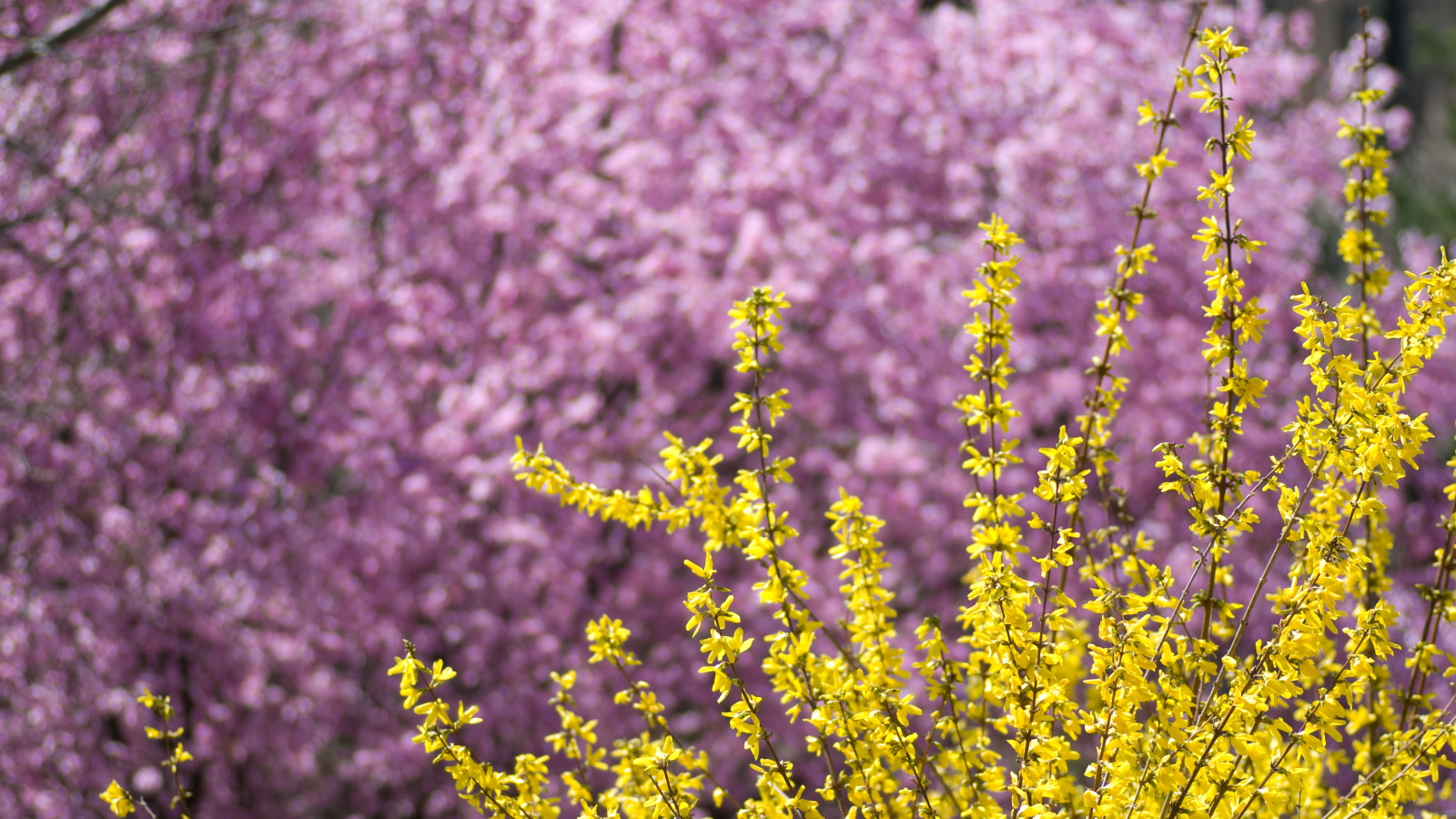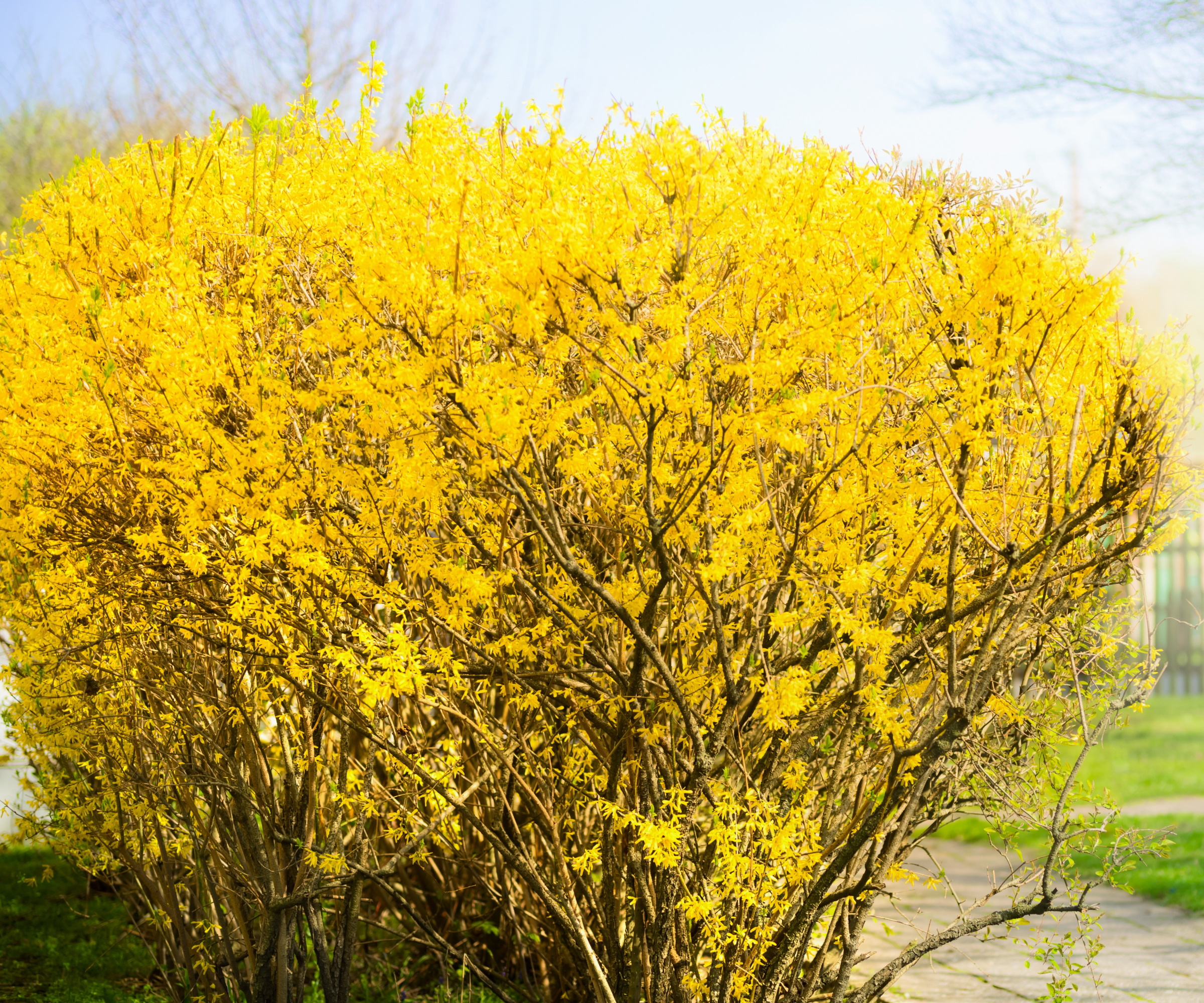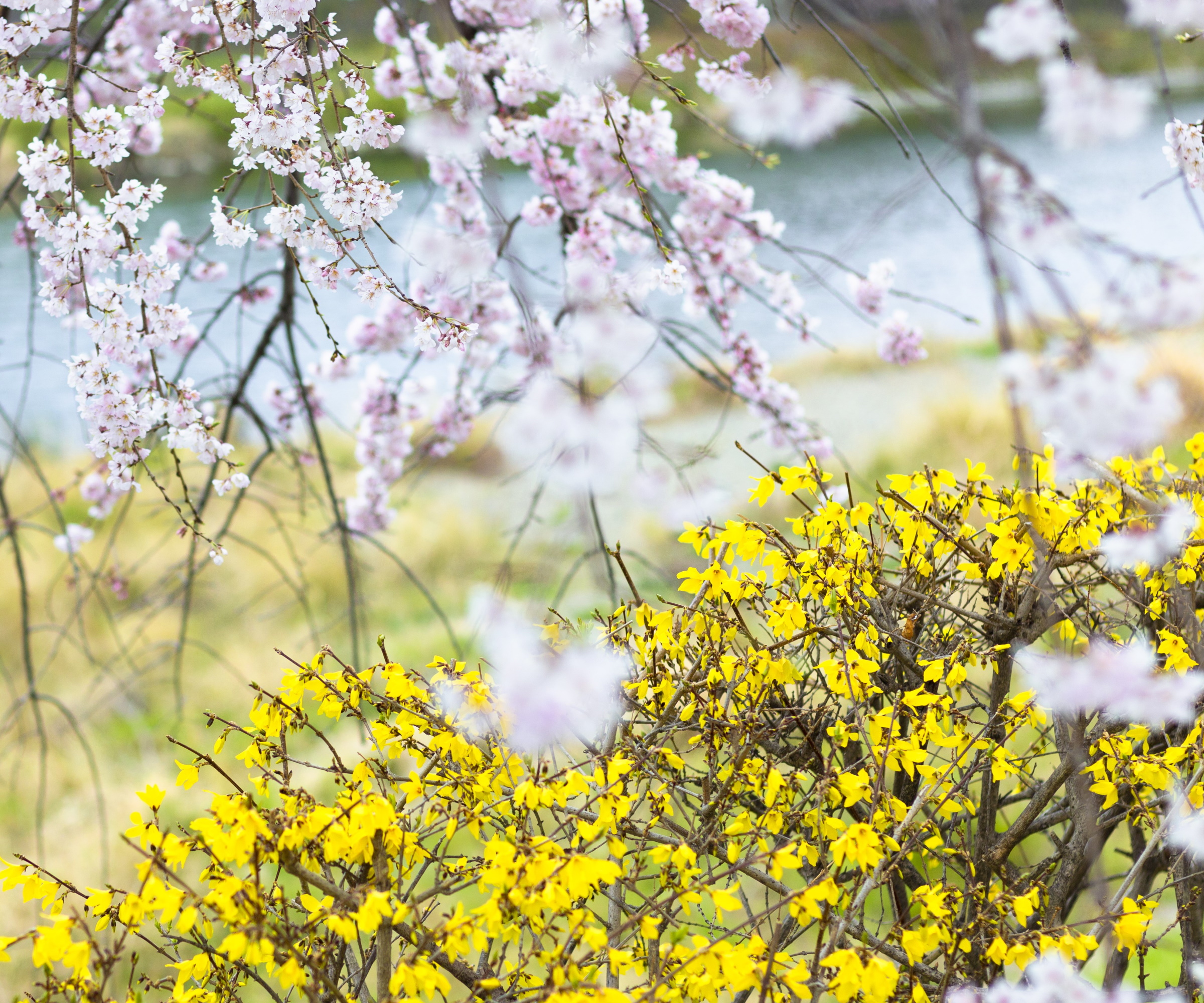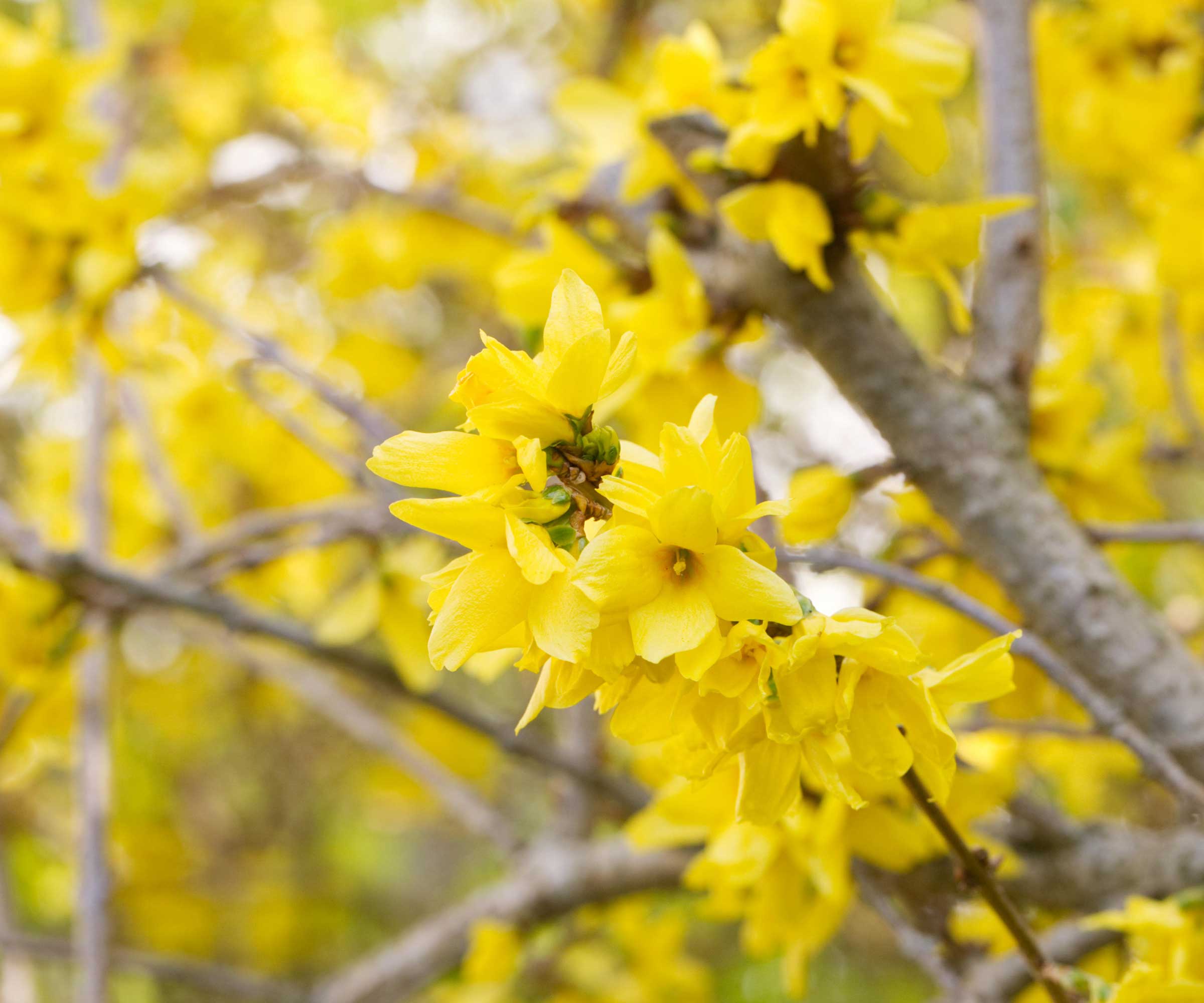How to grow forsythia – the hardy shrub that will reward you with a bounty of golden blooms
This cold-hardy shrub is one of the earliest to blossom in late winter and early spring, filling our backyards with golden-yellow stars


Forsythia is a deciduous shrub renowned for its golden yellow flowers that appear in late winter and early spring. This resilient plant, belonging to the olive family, Oleaceae, is native to East Asia.
It is a remarkably adaptable shrub, noted for its ability to thrive in various soil types and climates, and it is for this reason that gardeners far and wide can successfully grow and enjoy forsythia.
Forsythia is a fast-growing shrub, noted as a 'good, vigorous grower,' says Fern Berg, garden expert and owner of Tree Vitalize, 'with some varieties growing 2-4 feet per year.' Whilst some pruning and maintenance are required, this growth habit improves the utility and appeal of this shrub. Many gardeners, for example, use forsythia as a hedge plant, which is particularly useful if you have a small outdoor space and want to maximize the amount of floral fanfare in your yard.
'Your forsythia will bloom with an abundance of yellow flowers,' Fern continues, 'brightening up the landscape and signaling the end of winter.' And, it is not just gardeners that will be happy, as both pollinators and insects that are early to wake from their winter sleep adore the blooms of forsythia.
For this reason, it can be a good idea to plant a forsythia hedge or single shrub at the front of the house, welcoming both wildlife and your visitors with cheery yellow blooms as the new growing season begins.


Fern is the Founder of Tree Vitalize, and has planted and currently cares for over 100 different native and exotic fruit, nut, and ornamental trees. She also cultivates an extensive vegetable garden, several flower gardens and cares for an ever-growing happy family of indoor plants.
How to grow Forsythia
Forsythia is a versatile shrub, noted for its ability to thrive in various soil types and climates. Popular for its utility in the garden, it can be used as a feature shrub, a hedge, or part of the garden border.
Things to consider when growing forsythia

When considering how to grow forsythia, note that this shrub is incredibly hardy, and will 'happily grow in US hardiness zones 5 - 8, with some varieties tolerating zones 3 - 4,' says Fern. Whilst hardy, some varieties will not respond well to prolonged cold spells, so it is always best to plant a suitable variety for your location.
Whilst forsythia blooms do have a scent, it is faint when compared with other winter and spring flowering shrubs, such as daphne or viburnum. Indeed, scent is important in the garden during the winter and spring months, but the arching forsythia stems full of yellow flowers go some way to compensate for this.
Once established, forsythia requires little attention other than annual pruning which will be required to keep the shrub in check. When planting, consider the best placement in your yard, which will be determined by many factors. As some varieties of forsythia can reach heights up to 8 - 10 feet, consider planting towards the back of borders or as part of the hedge line.
Whilst not fussy, forsythia are 'sun lovers,' says Fern. 'It is best to plant your forsythia in full sun to get the most out of it.' Whilst they will tolerate partial shade, the more sun they get, the greater their blooms. An overly shady spot may cause your shrub to 'develop an unattractive, leggy growth habit,' Fern says, as it tries to reach for the light.
When deciding on a forsythia variety, consider first where you intend to plant your new shrub as there are different varieties to suit most situations. Some smaller forsythia varieties, such as Forsythia 'Spring Baby from Garden Goods Direct, may only reach a height of 2-3 feet with a slightly wider spread, while many of the larger varieties, such as Forsythia 'Lynwood Gold' from Perfect Plants, can reach around 8-10 feet in height and spread. Always select the right plant for the right place in your yard.
Ideas for spring planting combinations

The flowers on your forsythia shrub will 'typically stay on the stem for about two weeks and then begin to fade,' says Fern. It is a good idea to consider other early spring flowering shrubs to grow near or next to your forsythia, complementing the bright yellow blooms that mark the start of spring.
As seen in the image above, the white blossom of a flowering cherry tree combines well with the golden yellow of forsythia. Many varieties of magnolia also work well, either with white or pale pink flowers. Smaller magnolia varieties, such as this Magnolia stellata 'Royal Star' from Garden Goods Direct complement forsythia blooms, and the attractive star-shaped white flowers add interest and impact to any yard.
Beyond spring, once the forsythia flowering has come to an end, 'the shrub will begin developing lush green leaves,' says Fern. This attractive green foliage is useful through the summer months as a backdrop for your annual and perennial planting.

Forsythia intermedia 'Lynwood Gold' is a beautiful addition to any landscape. Beginning in early spring, this deciduous shrub will bloom with striking yellow flowers that light up your garden, with an exceptionally long bloom time.
Top tips when growing forsythia

- Soil: Forsythias are fairly tolerant of most garden soils, although for best results avoid a waterlogged spot in 'preference for somewhere that has well-draining soil,' says Alex Kantor, garden expert and owner at Perfect Plants Nursery. 'Forsythia can be planted in early spring or mid-fall, depending on your hardiness zone.' If you are concerned about the quality of your soil, 'applying a layer of organic mulch around the base of the shrub can help,' Alex says, 'doing so by retaining moisture and suppressing weeds.'
- Light: This shrub has a preference for a sunny spot. 'Choose a location in your garden that receives full sunlight,' Alex says. In doing this, your forsythia shrub will reward you with a bounty of blooms come spring. Remember, the more sun, the more flowers.
- Watering: After planting, 'water the shrub deeply to help establish its root system,' Alex says. 'Forsythia has moderate water needs,' so water it regularly during dry periods especially if you live in a warmer zone, 'keeping the soil moist but not waterlogged.'
- Fertilizing: In general, forsythia are not heavy feeders, but to aid plant growth and health, you can apply fertilizer during the growing season in spring and summer. Alex recommends 'applying a balanced slow-release fertilizer every two to three months which should contribute to healthy growth.' Using a balanced, slow-release fertilizer is a simple and easy way to do this, such as this Slow Release Fertilizer from Perfect Plants.
- Pruning: It is 'recommended to prune forsythia after the shrub finishes blooming,' Alex says. 'At this time, wait for the yellow flowers to fade and for the leaves to grow. Pruning at this point allows the plant to begin developing next year's buds, which it carries through the fall and winter seasons.' Remember that forsythia blooms on old wood, so pruning beyond this point, in summer for example, will reduce the number of flowers in the following spring.
- Container growing: 'Container growing can be a suitable option for forsythia, especially for those with limited space,' Alex says. Ensure that you place the container in a sunny location and water regularly, keeping the soil moist but not waterlogged. 'Container growing allows forsythia to be enjoyed in a more compact form with regular pruning,' Alex says.

Alex has worked in the horticultural industry for over 20 years and grew up on the farm since his childhood years. Alex is an expert on landscape trees, shrubs, and indoor plants. He is passionate about growing and helping others learn the trade. You'll see him driving around the farm with his sidekick, Cricket, in tow.
FAQs
Can I plant forsythia in part shade?
Yes, forsythia shrubs will tolerate a partially shaded position. However, it is best to plant forsythia in a position where it can enjoy approximately six hours of sunlight a day. The more sun your shrub gets, the more flowers you will enjoy. Whilst you can plant forsythia in a partially shaded spot, be aware that your plant will produce fewer blooms.
When is the best time to prune forsythia?
The ideal time to prune forsythia is in the spring, once flowering has finished. If left any later than mid-spring, you will remove the mature wood that will produce flowers the following year. It is important to prune annually, at the correct time, to keep your forsythia compact and floriferous, and prevent the shrub from growing 'leggy' stems that are unsightly.
Forsythia is a superb shrub that will brighten up your yard at the start of spring. Consider planting other spring-flowering shrubs, such as viburnum or magnolia, which are sure to add even more interest to your yard at this time of year.
For more forsythia information, see our guide on when is it too late to prune forsythia, ensuring that you trim your shrubs at the right time.
Sign up to the Homes & Gardens newsletter
Design expertise in your inbox – from inspiring decorating ideas and beautiful celebrity homes to practical gardening advice and shopping round-ups.

Thomas is a Content Editor within the Gardens Team at Homes and Gardens. He has worked as a professional gardener for both public spaces and private estates, specializing in productive gardening, growing food and flowers. Trained in Horticulture at the Garden Museum, he has written on gardening and garden history for various publications, including The English Garden, Gardens Illustrated, Hortus, The London Gardener and Bloom. He has co-authored a Lonely Planet travel book, The Tree Atlas, due out in 2024.
-
 5 vital ways a home battery backup can help with your most urgent needs in a power outage – from heating to flood prevention and calls
5 vital ways a home battery backup can help with your most urgent needs in a power outage – from heating to flood prevention and callsExperts say they're a worthy investment
By Clement Feng Published
-
 Is the viral salt hack the secret to a weed-free patio? A garden expert warns of irreparable, long-term damage – plus reveals the safest way to get results
Is the viral salt hack the secret to a weed-free patio? A garden expert warns of irreparable, long-term damage – plus reveals the safest way to get resultsYou might have seen gardeners on TikTok or Instagram using salt to kill weeds in pavers, but this hack should be avoided at all costs
By Thomas Rutter Published